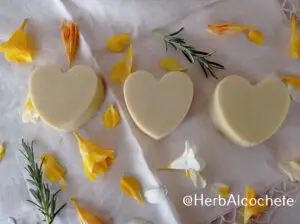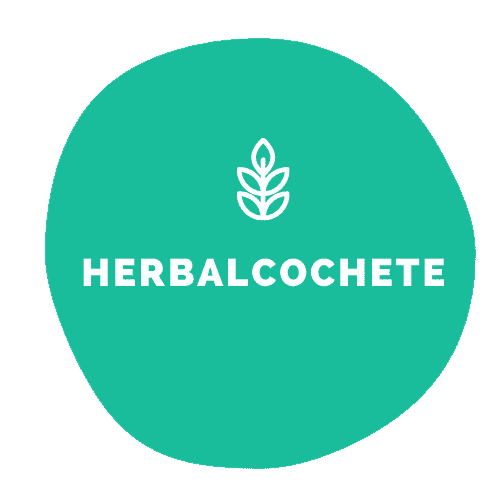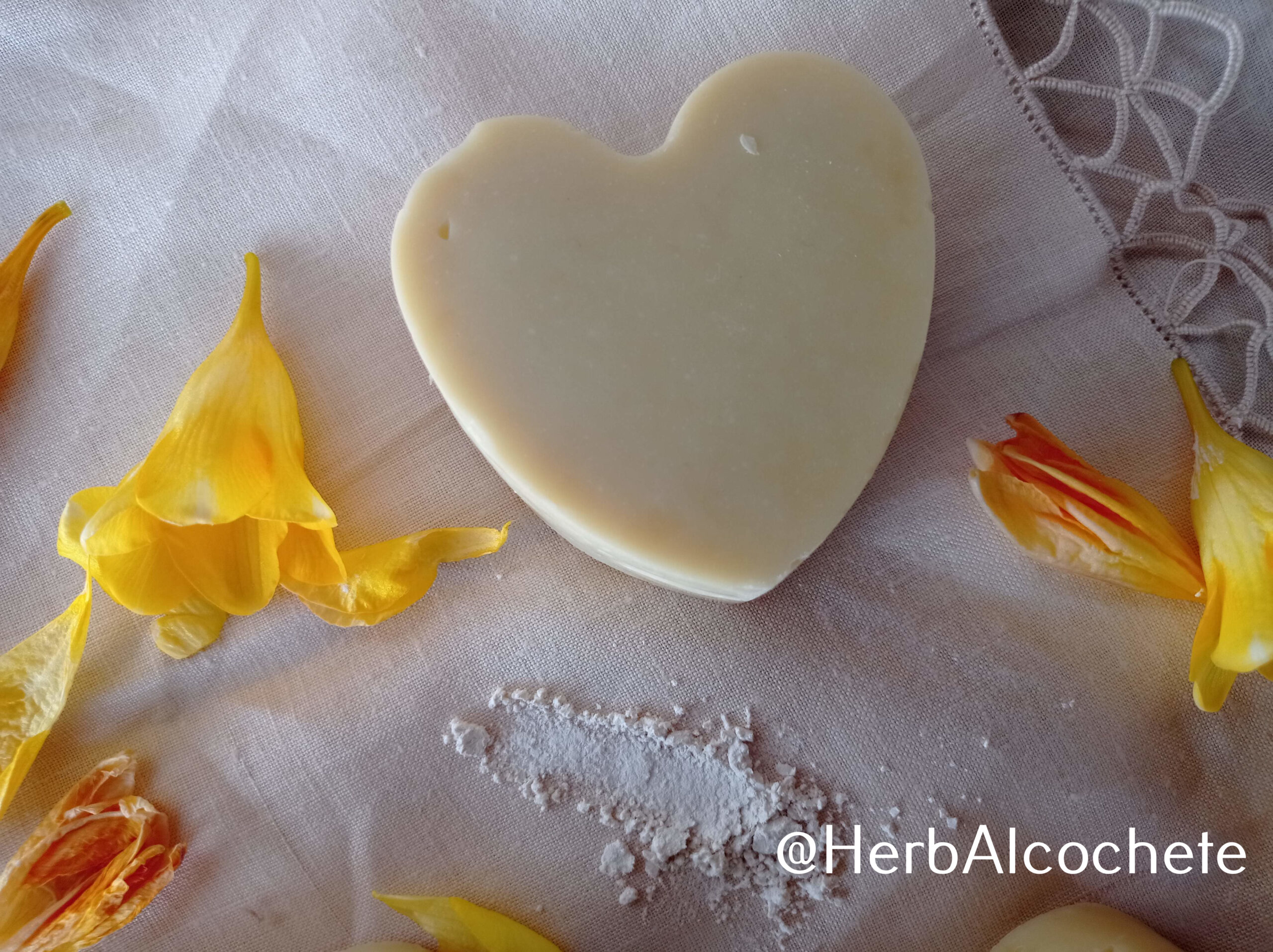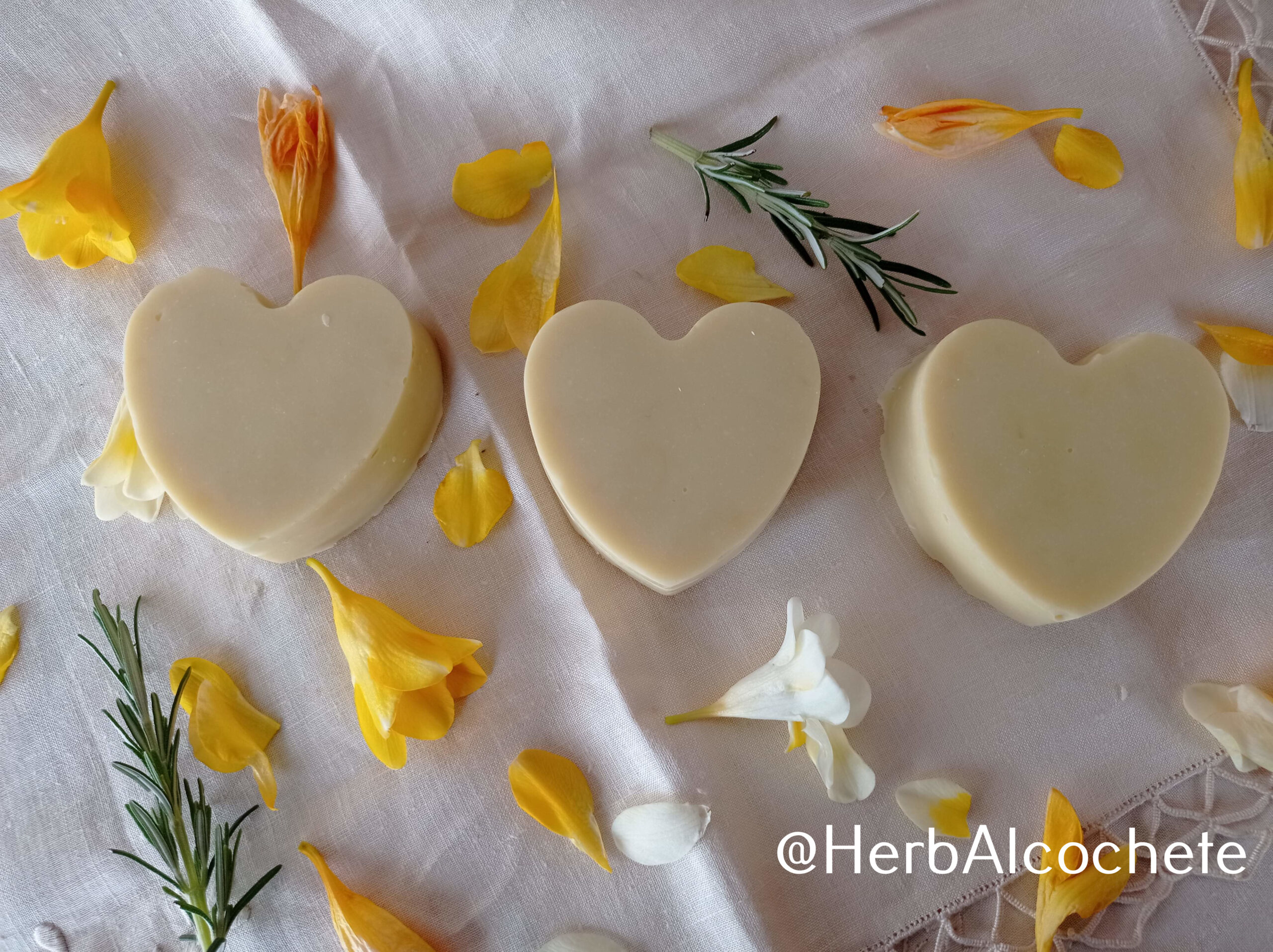This face soap recipe with shea butter and oat flour is extremely soft and gentle, and it helps to keep your skin moisturized, making it ideal to wash and clean your face with soap. Shea butter adds extra conditioning properties, while oat kernel flour will give your soap a luxuriously silky and soft feeling.
Keep reading and find out how to make this great soap for your face.
Table of Contents
- How Do You Make Homemade Face Soap?
- Face Soap Recipe Ingredients
- Can You Use Homemade Soap On Your Face?
- Find Where To Buy Handmade Shea Butter and Oat Soap
- How To Use This Soap
- Related Posts
- Watch This Video Before Starting Your Recipe
How Do You Make Homemade Face Soap?
This homemade face soap is made with a rich mixture of oils, shea butter as a special moisturizing addition and oat flour
Shea Butter
Shea butter that goes by the INCI name Butyrospermum parkii, is a wax-like solid butter, extracted from the nuts of the shea tree. It has an off-white or ivory color when refined. Natural shea butter is more yellowish.
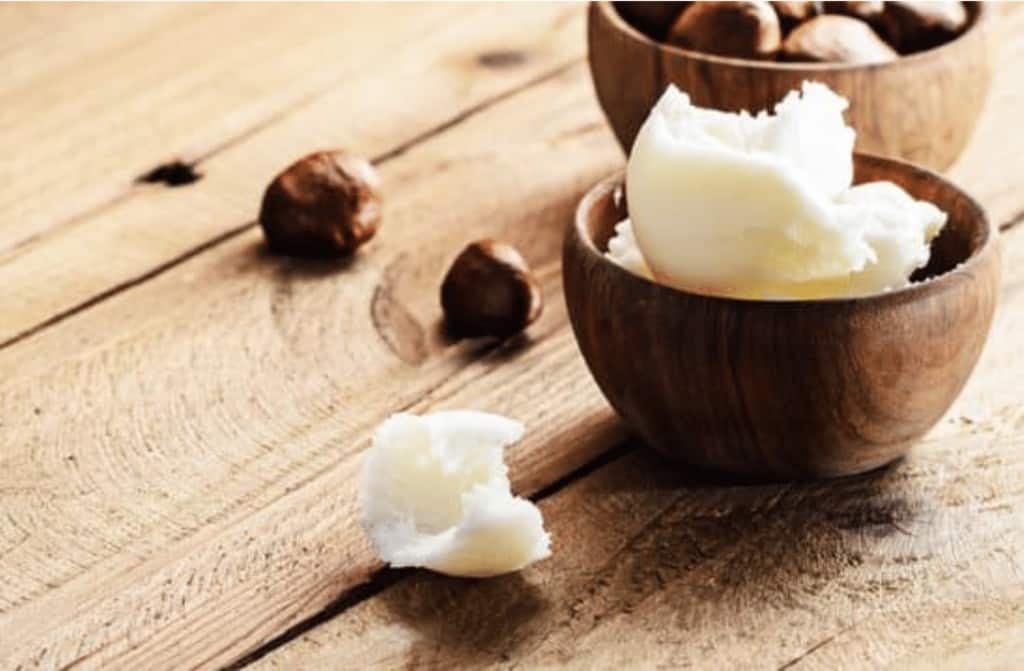
It’s rich in several essential nutrients: linoleic, palmitic, stearic, and oleic fatty acids; vitamins A, E, and F; triglycerides, the fatty part of the shea nut that nourishes and conditions your skin; cetyl esters, the waxy part of the shea nut butter that conditions skin and locks in moisture.
That makes shea butter a noble ingredient in natural cosmetics, easy to spread, great to smooth, sooth and condition your skin.
I’ve used shea butter in this Liquid Soap Recipe and it adds a very creamy texture to it, makes the soap smoother and more conditioning to skin.
Oat Flour
I’ve bought oat kernel flour in a cosmetics supplier as a vegetal protein for my own cosmetics. Namely, to try on facial lotions, shampoo bars and my hair conditioner.
It’s probably too expensive for soap as you can perfectly use oatmeal flour with same effect. The difference may very well simply be the granularity, where cosmetic oat flour is a finer powder. Why did I use it then? I had just too much of it with a short shelf life, and thought of using it in soap than throwing it away later on…
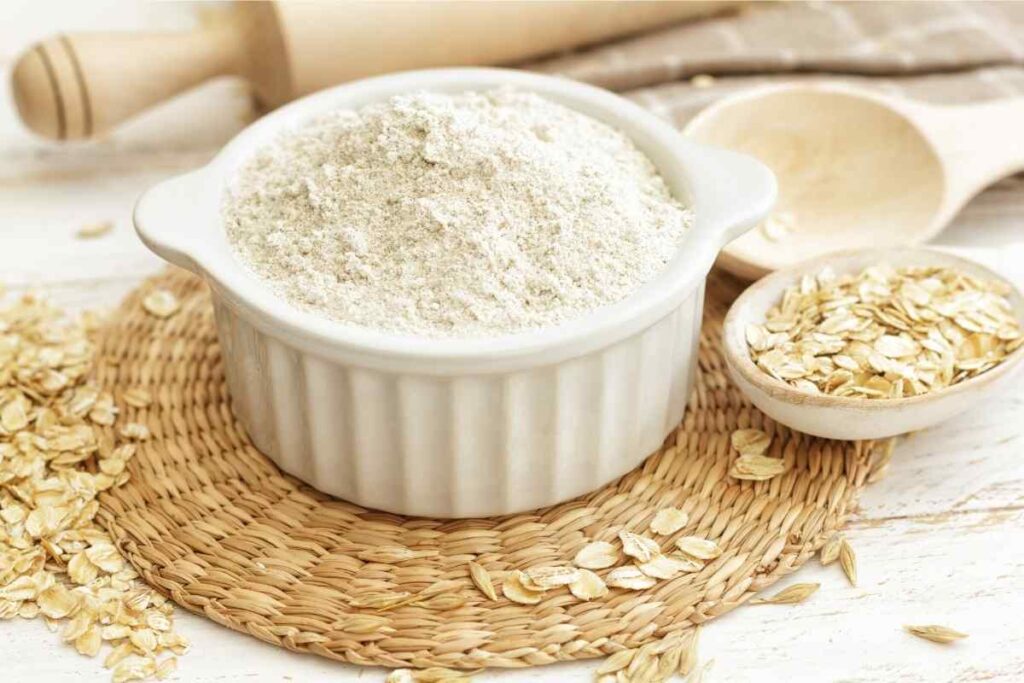
Colloidal oatmeal contains several components that could be beneficial for the skin. These include
- beta-glucan, a soluble fiber that can absorb water and has anti-inflammatory properties
- phenols, which are a type of anti-septic, desinfectant and antioxidant
- saponins, which have soap-like properties and can act as a cleanser
- oils, skin nourishing and moisturizing
Skin soothing, skin protecting and antioxidant, it’s a real treat for dry, irritated, inflammed or eczema-prone skin. Even if you skin is normal, it will benefit from an oat skin treatment.
Depending on the size of the powder, oat flour can make for a gentle exfoliant. Oat flour is nothing but fine ground whole grain oats. You can even make it at home, by grounding whole oats in a food processor. Probably your homemade flour will be more exfoliant, as the powder will be coarser than the flour your buy in health stores.
It’s an excelent ingredient for a facial soap, adding exfoliation, skin soothing, anti-inflammatory and desinfecting properties to soap.
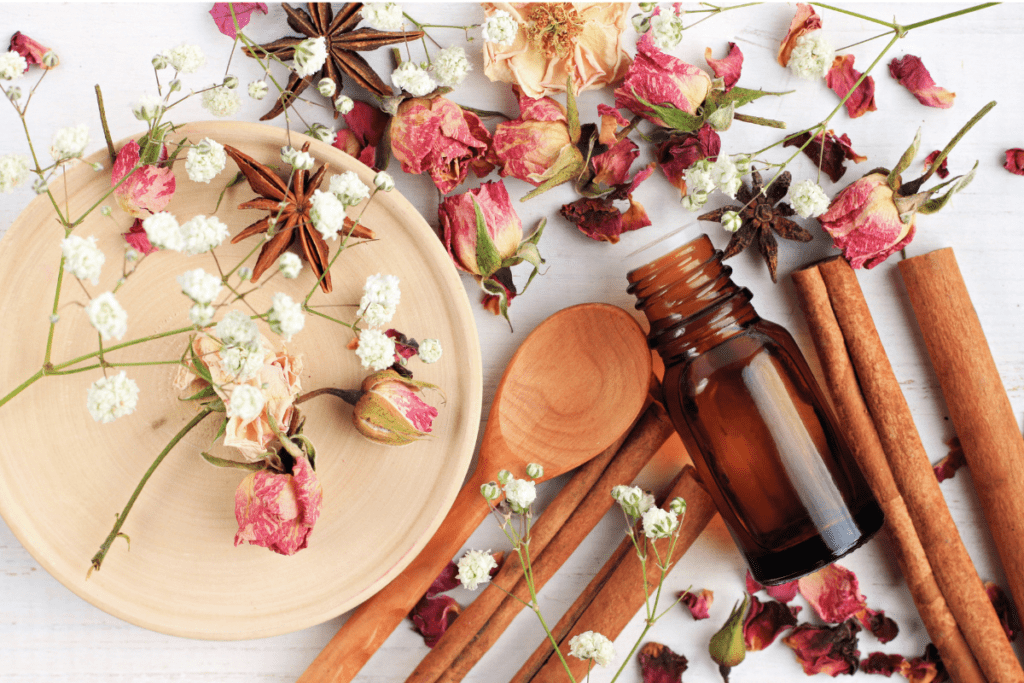
Rose Geranium Essential Oil
Regarding scent, I have used a blend of rose geranium essential oil with patchouli for this facial soap. I personally love to use the scent of rose geranium in facial products, even in my hair conditioner sometimes. Remember, essential oil’s plant medicinal properties probably won’t survive saponification, so use them as the most natural way to scent your soap.
While a bit intense on itself (probably unpleasant to some), rose geranium has a more delicate, flowery but also camphorous scent in this cold process soap.
If your skin is sensitive, you can turn this soap milder by switching to chamomile or lavender essential oil. Best option, however, is to leave the soap unscented.
Face Soap Recipe Ingredients
This face soap recipe has a rich mixture of oils: olive oil, coconut oil, castor and sunflower oil. Shea butter adds creaminess and strong moisturizing properties, making this soap creamy, soft and conditioning.
Oat flour provides extra silkiness, gentle exfoliation, and anti-inflammatory properties to soothe the skin in your face. The soap has a light yellow shade, most likely coming from the olive oil, but it may be also from the oat flour. A silicone mold with individual hearts give a cute and lovely shape to this gentle and nourishing face soap.
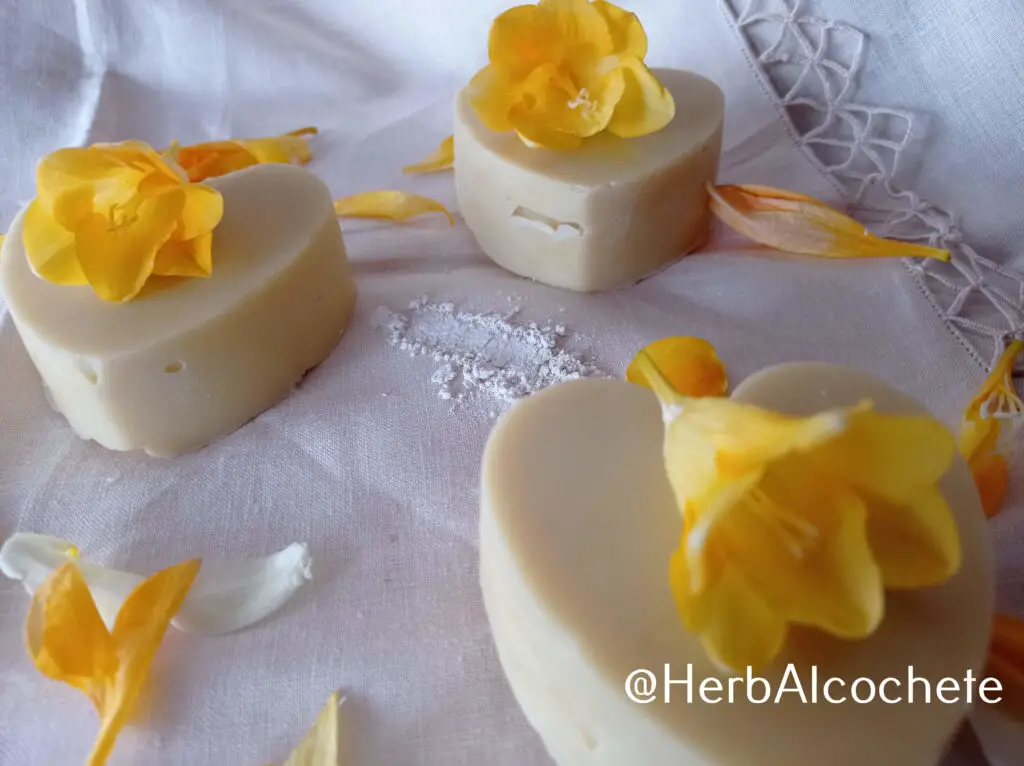
Can You Use Homemade Soap On Your Face?
You can use homemade soap on your face, since it contains nourishing, moisturizing oils and natural glycerin. This face soap recipe in particular, contains 5% superfat, most of it from shea butter, adding extra moisturizing properties.
Natural glycerin, a natural humectant that helps to keep moisture on your skin, is present in any handmade soap. That’s right, all handmade soap, even the one we don’t call “glycerin soap” contains natural glycerin. Check out more detailed information about glycerin in Glycerin vs Vegetable Glycerin.
Mass-Produced Soap
Glycerin is chemically removed from mass-produced soap, and used as an ingredient for other skincare products, like face lotions and creams. You can only enjoy it in a natural form in your homemade soap. In addition, commercial soap contain chemicals such as detergents, preservatives, artificial colorants, emulsifiers, or hardening substances, that are known to dry out the skin and leave it dry, irritated and sore.
They are present to make soap last longer in your shower, have a long shelf-life, look pretty and have a strong scent. They are NOT there to benefit your skin. And it is insane the amount of ingredients most commercial soap have.
Why Handmade Soap Was Harsh In The Past And Now Is Gentle To Your Skin
Around the last century, housewives made soap at home as a routine task. Many times, lye was obtained from dissolving wood ash in water, making this way a lye water – where lye concentration was difficult to control. Since lye wasn’t pure or concentrated as nowadays, the resulting soap was rough and harsh, and it was used to clean everything.
Today’s handmade lye soap is made with pure lye, carefully calculated, and superfat is always added to make sure all lye is consumed. This is why handmade soap nowadays is mild, gentle and much less drying. “Grandma’s lye soap” days are past. Therefore, the idea that handmade soap is harsh and commercial soap is better – it’s just wrong.
But don’t take my word on it. Make your own experiment. Make soap at home, or buy it online, and give it a try for one month. Then go back to a commercial soap or bath gel. See the difference for yourself!
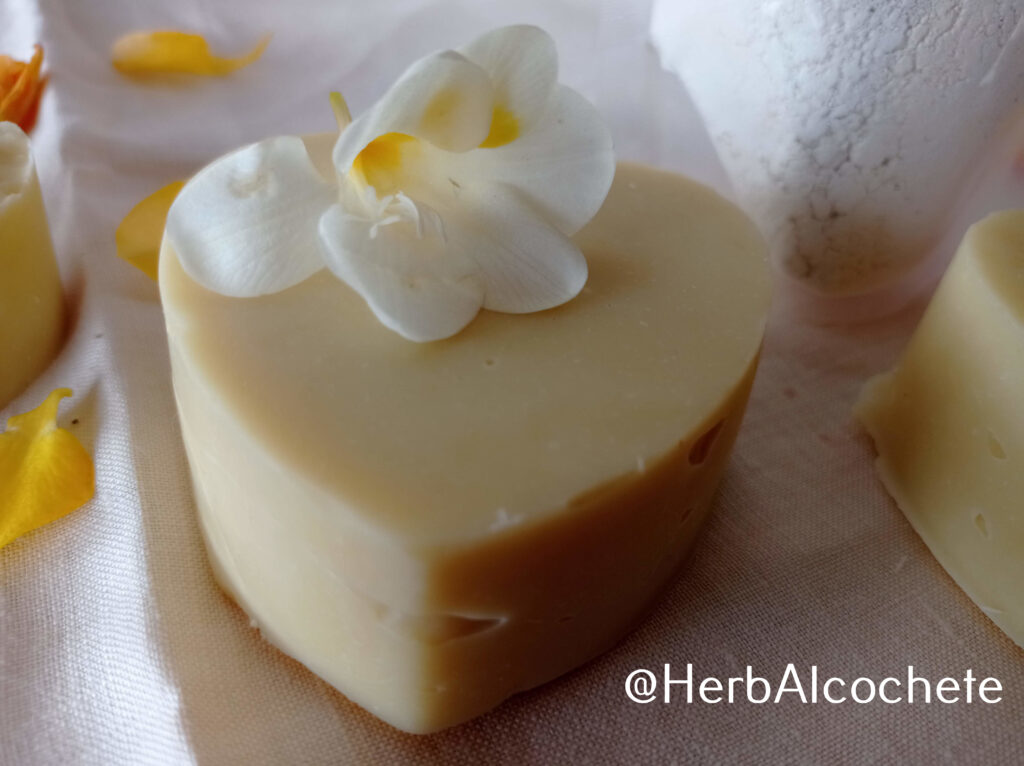
Find Where To Buy Handmade Shea Butter and Oat Soap
Still not inspired to make your own soap at home? But you do wish to use or give it a try at a wonderful handmade soap with shea butter and oatmeal? You can find a few options online to buy handmade soap below:
- Lavender Oatmeal Shea Butter Soap (Etsy)
- Gentle Oatmeal Soap (Etsy)
- All Natural Shea Butter Soap (Etsy)
- Unscentend Shea Butter Soap (Etsy)
Gentle Oatmeal Soap (Etsy)All Natural Shea Butter Soap (Etsy)
How To Use This Soap
Wet your face and hands with water, then rub your soap in your hands to create a lather. Apply to face with circular movements until you have a creamy lather. Wash away the soap abundantly with water. Avoid eye contact with soap to prevent stinging.
This soap is made specifically for your face, but you can use it as a body wash as well with no problems. Make a patch test before using your soap. Stop using your soap if you feel any immediate adverse reaction in your skin (red skin, rashes, itching).
To take best advantage of your handmade soap (made by yourself or store-bougth), read How Do You Use Handmade Soap?
Related Posts
- Vegetable oils: Oil Properties For Soap Making
- Essential oils: Best Essential Oils for Soap Making
- Colorants: How To Color Your Soap With Kitchen Ingredients
- Cold Process Tutorial Guide: How Do You Make Cold Process Soap?
- Cold Process Soap Recipes: Free Cold Process Soap Recipes
- Beginner Recipes: Soap Recipes for Beginners
Watch This Video Before Starting Your Recipe
Equipment
Ingredients
Lye Water
- 120 g distilled water
- 64 g lye (100% sodium hydroxide)
- 1 tsp sodium lactate or fine salt – to harden soap
Oils
- 182 g extra virgin olive oil
- 136 g refined or organic coconut oil
- 91 g sunflower oil
- 23 g castor oil
After Trace
- 23 g refined or organic shea butter
- 14 g colloidal oat powder or oat flour
- 5 drops grapefruit seed extract (GSE) (anti-oxidant)
- 13 ml essential oils blend
- alcohol or witch hazel to sprinkle
Essential Oils Blend
Instructions
Get Ready!
- Wear goggles and gloves! Look at “Safety Precautions” in the video above or in Soap Making Safety Precautions
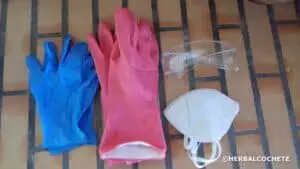
- Watch the video above about "Cold Process Soap Making Tutorial" or read the post Learn To Make Cold Process Soap for instructions on cold process soap making before starting. These are generic but important steps for all recipes. Don’t start the recipe without having everything ready!

Heat The Oils
- Heat the oils until the solid oils are completely melted (it is not necessary to heat all the time).
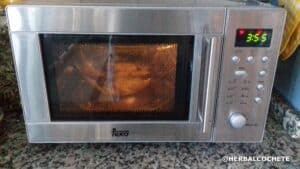
Make the Lye Water
- Make the lye solution according to How To Make Lye Water. Add the sodium lactate to it. Mix well until the vapours start to dissipate. The mixture will be clear in the end.
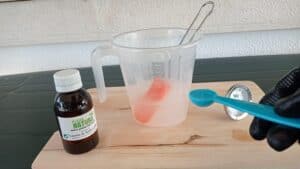
Make the Soap Batter
- Use as a target temperature 38ºC for the oil-solution mixture. If necessary, you can reheat the oils, but not the lye solution. Reach trace with the immersion blender.
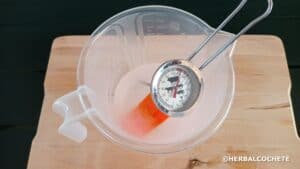
Add After Trace Ingredients
- Melt the shea butter before adding it to the soap and add the oat protein or oat flour to it. Mix well before adding to soap.
- Add after trace ingredients: essential oil(s), grapefruit extract, shea butter and oat. Mix well the batter only with a spoon.
Molding and Curing
- Pour the batter into the molds, and sprinkle with alcohol or witch hazel, to avoid soda ash.
- Let it set for 48 hours, always keeping an eye on the hardness of the soap.
- Unmold when fully solid and let it cure for 4 to 6 weeks. See How To Cure Soap. Enjoy your soft face soaps!
